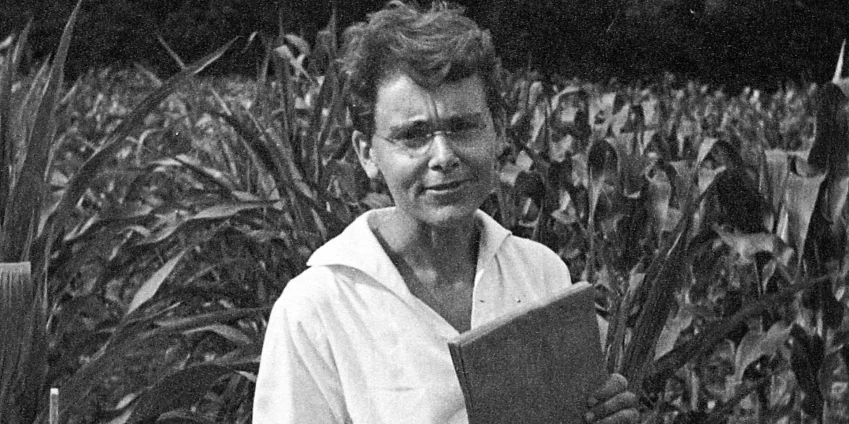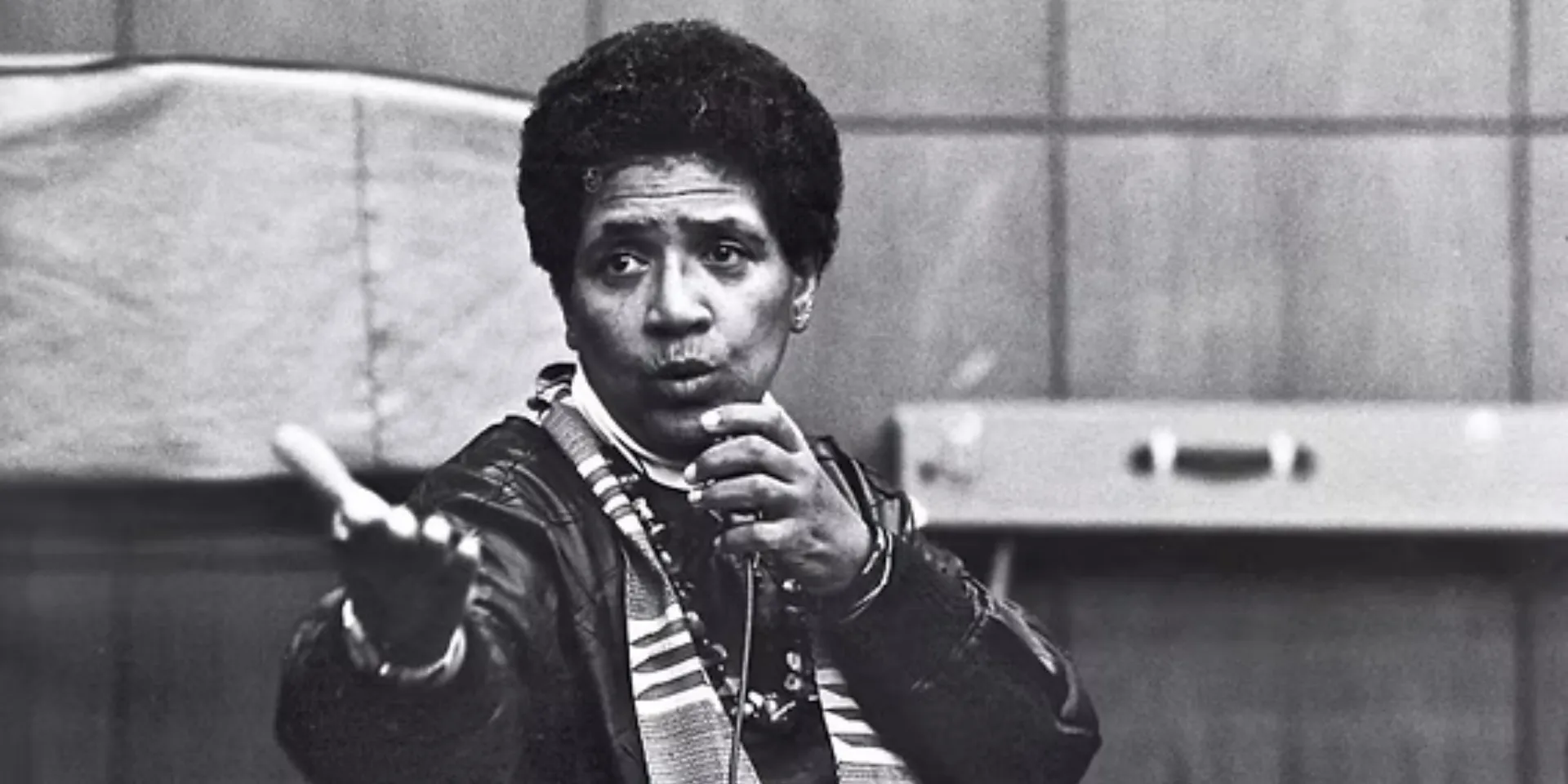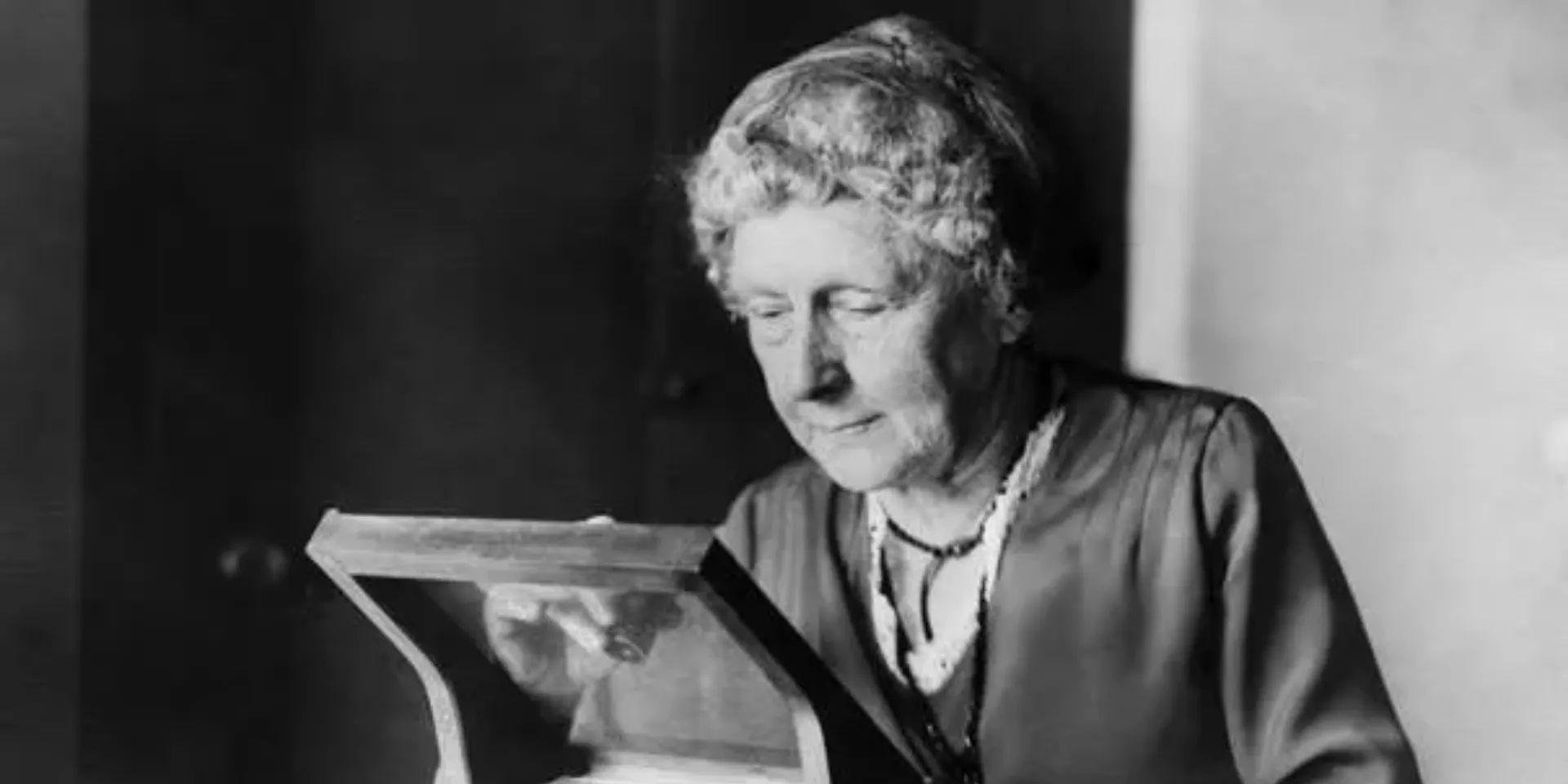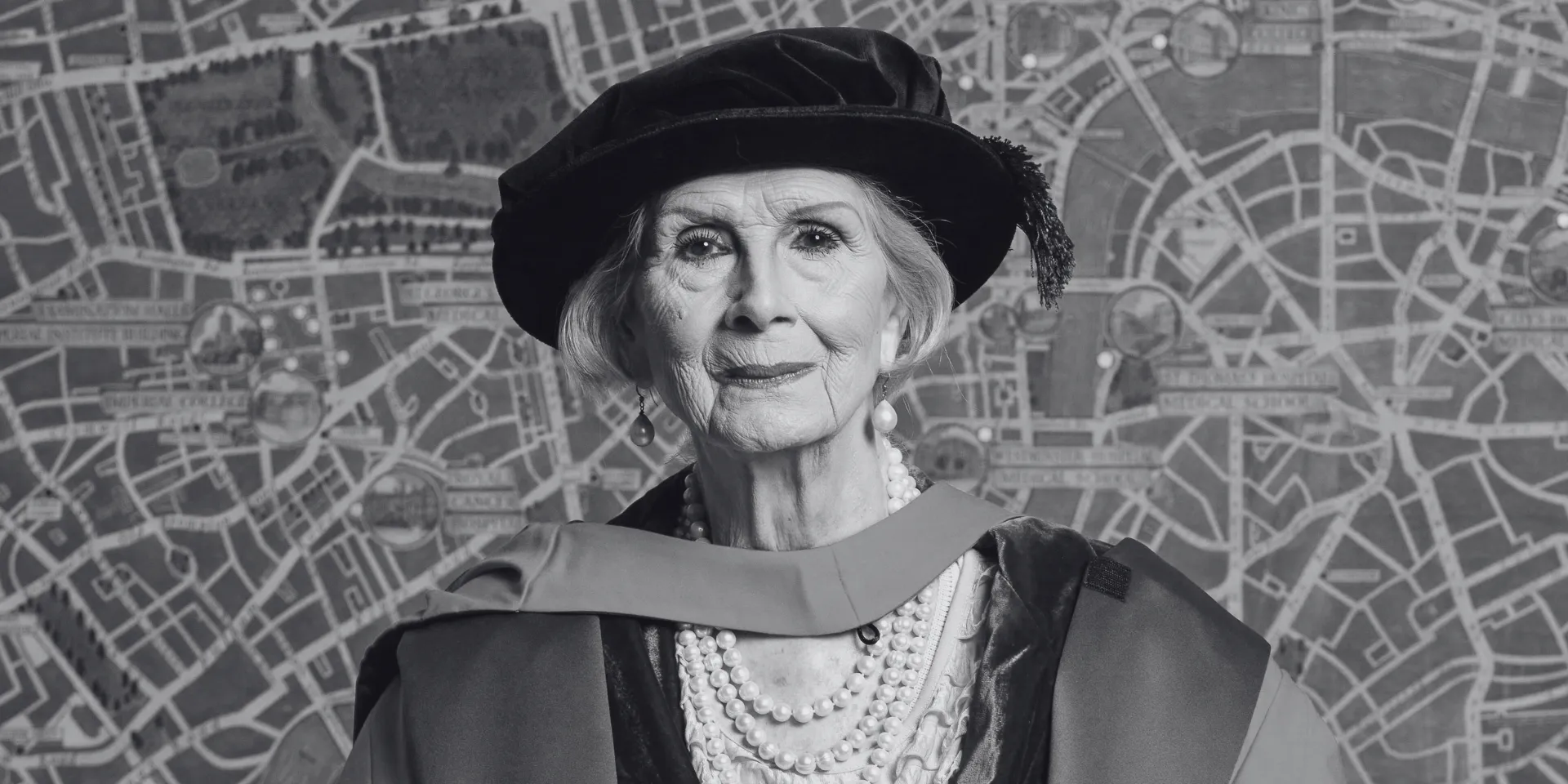Contents
ToggleBarbara McClintock spent her entire career watching corn grow. While other scientists chased flashy discoveries in physics and chemistry, she sat in cornfields with her microscope, studying the patterns on kernels that everyone else ignored. What she found in those patterns would eventually overturn everything scientists thought they knew about genetics. But first, she had to endure thirty years of being dismissed, mocked, and erased from scientific history.
McClintock discovered that genes could move. She proved that genetic information wasn’t fixed in stone but could jump around chromosomes like dancers changing partners. This discovery explained how organisms adapt, how evolution works at the molecular level, and why your cells can specialize into different types despite having identical DNA. Modern genetic engineering, cancer research, and our understanding of heredity all build on principles McClintock identified while the scientific establishment told her she was wrong.
The fact that you’ve probably never heard of her while knowing names like Watson and Crick reveals everything about how science treats women who make revolutionary discoveries. McClintock didn’t just face the usual sexism of being a woman in science – she experienced the particular cruelty reserved for women who are right when powerful men are wrong.
Born Into a World That Didn’t Want Her
Barbara McClintock entered the world on June 16, 1902, as Eleanor McClintock – a name her parents would later change because they decided it was too “delicate” for their independent daughter. Even this small detail reveals the contradictions that would define her life. Her parents recognized she was different but couldn’t quite figure out whether to suppress or support that difference.
Her father, Thomas Henry McClintock, was a homeopathic physician trying to establish a practice in Hartford, Connecticut. Her mother, Sara Handy McClintock, came from an upper-middle-class family that valued respectability above all else. They already had two daughters when Barbara arrived, and would have one more son after her. Thomas had desperately wanted another boy. When he got Barbara instead, he made his disappointment clear in letters to relatives.
The family dynamics were complicated from the start. Sara McClintock struggled with what she called Barbara’s “capacity to be alone” – a trait that emerged when Barbara was barely three years old. While other children sought constant attention and approval, Barbara could entertain herself for hours. She didn’t need validation from others, didn’t cry when left alone, and showed an unusual ability to focus intensely on whatever caught her interest.
This independence disturbed Sara, who saw it as unnatural for a girl. In an era when women’s entire value came from their relationships with others – as daughters, wives, and mothers – a girl who didn’t need people was almost monstrous. Sara’s solution was to send three-year-old Barbara to live with an aunt and uncle in Brooklyn for several months, ostensibly to reduce financial strain while Thomas established his medical practice.
The real reason was darker. Sara couldn’t bond with a daughter who didn’t seem to need her. She later admitted to Barbara that she felt no emotional connection to her third child and thought the separation might fix whatever was “wrong” with their relationship. It didn’t. The months in Brooklyn only reinforced Barbara’s self-reliance and taught her that she couldn’t count on others for emotional support.
The Education They Tried to Deny Her
When Barbara graduated from Erasmus Hall High School in 1919, she announced her intention to attend Cornell University’s College of Agriculture. Her mother’s reaction was swift and absolute: absolutely not. College would make Barbara unmarriageable, and what man would want a wife who thought she was smarter than him?
This wasn’t paranoid thinking on Sara’s part. In 1919, educated women faced real discrimination in the marriage market. Men openly stated they wouldn’t marry women with college degrees. Families viewed daughters’ education as wasted investment since women would supposedly abandon careers for motherhood. Sara McClintock was trying to protect her daughter from spinsterhood and social rejection.
The standoff lasted all summer. Barbara had been accepted to Cornell but couldn’t enroll without parental permission and financial support. Sara held firm, backed by relatives who agreed that Barbara needed to focus on finding a husband instead of pursuing useless education. The message was clear: Barbara’s intelligence was a liability, not an asset.
But Thomas McClintock had been watching his daughter’s frustration build. Despite his early disappointment at not having another son, he’d come to respect Barbara’s unusual mind. At the last possible moment – literally the day before registration closed – he overruled his wife and gave Barbara permission to attend Cornell. This decision would create a permanent rift between Barbara’s parents, with Sara never forgiving Thomas for enabling their daughter’s “unnatural” ambitions.
Barbara arrived at Cornell in September 1919 with minimal financial support and enormous determination. She enrolled in the College of Agriculture because it was free for New York state residents, not because she had any particular interest in farming. What she discovered there would shape the rest of her life.
Finding Her Calling in Corn
Cornell’s botany department in 1919 was conducting some of the most advanced genetic research in the world. The department focused on corn (maize) genetics because corn was perfect for studying heredity. Each kernel on an ear of corn is a separate offspring, making it possible to see genetic patterns in a single generation. The different colors and patterns on kernels provided visual evidence of genetic changes that would be invisible in other organisms.
Barbara took her first genetics course in 1921, taught by C.B. Hutchison, a plant breeder who recognized her exceptional ability immediately. When she asked questions, they weren’t the usual student queries about exam material. She wanted to understand why genetic ratios worked the way they did, what mechanisms created hereditary patterns, and how exceptions to Mendel’s laws might reveal deeper truths about inheritance.
Hutchison did something remarkable for a male professor in 1921: he called Barbara at her rooming house and invited her to take the graduate-level genetics course the following year. This phone call, as Barbara later said, “cast the die for my future.” It was the first time an authority figure had recognized her intelligence as an asset rather than a problem to be managed.
But there was a catch. Cornell’s Plant Breeding Department, which housed genetics research, didn’t accept female graduate students. Women could take courses and do research, but they couldn’t officially earn degrees in genetics. Barbara had to register for her master’s and PhD in botany while doing genetics research on the side. This bureaucratic discrimination meant her official credentials never reflected her actual expertise.
Barbara’s response was typically pragmatic. If they wouldn’t let her study genetics officially, she’d become so good at cytology (cell biology) that the genetics researchers couldn’t function without her. She developed a technique using carmine stain to visualize corn chromosomes that was so superior to existing methods that researchers from around the world came to learn from her.
Assembling the Corn Group
By 1927, Barbara had become the center of an informal research group that would revolutionize genetics. The group included future Nobel laureate George Beadle, Marcus Rhoades who would become one of America’s leading geneticists, and Harriet Creighton who would prove crossing-over with Barbara. They called themselves the “corn group,” and their collaboration style was unlike anything in academic science.
Instead of the rigid hierarchy typical of research labs, the corn group operated as intellectual equals. They shared ideas freely, debated interpretations vigorously, and supported each other’s research without worrying about who would get credit. This collaborative approach was partly necessary – they were pursuing questions so complex that no single researcher could answer them alone – but it also reflected Barbara’s influence on the group’s culture.
Barbara had learned early that she couldn’t rely on institutional support or formal recognition. Her response was to create an alternative system based on mutual respect and shared curiosity rather than credentials and hierarchy. The corn group’s meetings, often held in cornfields or over coffee, produced more breakthrough discoveries than most formal research institutes.
The group’s first major triumph came in 1930 when Barbara proved that chromosomes physically exchanged material during cell division. Scientists had theorized this “crossing-over” process existed, but no one had demonstrated it visually. Barbara identified corn strains where genetic changes corresponded to visible chromosome alterations, providing the first cytological proof of genetic recombination.
The Discovery That Should Have Made Her Famous
In 1931, Barbara and Harriet Creighton published a paper that should have established Barbara as one of the century’s leading scientists. They proved that genetic recombination involved physical exchange between chromosomes, linking the abstract concept of genes to actual cellular structures. This discovery was fundamental to understanding how heredity works at the molecular level.
The scientific community recognized the importance immediately. Barbara was invited to present her work at international conferences, offered prestigious fellowships, and elected to the National Academy of Sciences in 1944 – only the third woman ever selected. By any measure, she had “made it” in academic science.
But recognition came with a catch. While scientists praised her technical skills, they treated her as a talented technician rather than a theoretical innovator. Male scientists would cite her chromosome studies while ignoring her interpretations of what those observations meant. They’d acknowledge her ability to see cellular details while dismissing her ideas about genetic function.
This pattern reflected a deeper bias about women in science. Men could accept that women might be good at detailed observation – work that required patience and careful attention. But theoretical insight, the ability to see larger patterns and propose new frameworks? That was considered beyond female capacity. Barbara’s colleagues genuinely couldn’t process the idea that she might understand genetics better than they did.
The Years of Wandering
Despite her scientific achievements, Barbara couldn’t find a permanent academic position. Universities that would have hired a male scientist with her credentials wouldn’t consider a woman for a faculty role. She survived on temporary fellowships and research grants, moving between institutions like an academic migrant worker.
From 1931 to 1941, she held positions at Cornell, the University of Missouri, and Columbia University, never staying anywhere long enough to establish a real research program. The University of Missouri offered her an assistant professorship in 1936 – her first and only traditional academic appointment – but the situation was impossible from the start.
As the only female faculty member in the sciences, Barbara was excluded from faculty meetings, denied access to certain facilities, and paid significantly less than male colleagues with fewer achievements. The department head who hired her, Lewis Stadler, supported her research, but he couldn’t protect her from institutional sexism. Other faculty members resented her presence and made their hostility clear.
The breaking point came when Barbara learned that the university considered her position temporary despite her title. If Stadler left or lost funding, she’d be immediately dismissed. Male assistant professors had job security and a path to tenure. Barbara had neither. She realized she was wasting her time trying to succeed within a system designed to exclude her.
HerWiki is built and maintained by the support of amazing readers like you. If this story inspired you, join the cause and help us make HerWiki bigger and better.
The Escape to Cold Spring Harbor
In 1941, Barbara accepted a position at Cold Spring Harbor Laboratory on Long Island. The institution, funded by the Carnegie Foundation, offered something no university had: the freedom to pursue research without teaching obligations or faculty politics. She could focus entirely on her corn genetics without dealing with committees, meetings, or hostile colleagues.
Cold Spring Harbor in the 1940s was a unique environment. The small research institute attracted scientists who didn’t fit traditional academic molds. The informal atmosphere and focus on research over hierarchy suited Barbara perfectly. She finally had the stability and resources to pursue the complex questions that had been forming in her mind for years.
It was here, studying color patterns in corn kernels, that Barbara made the discovery that would define her legacy. She noticed that certain genetic changes didn’t follow normal inheritance patterns. Colors would appear and disappear in ways that standard genetics couldn’t explain. Some genes seemed to turn on and off, and the switching patterns suggested they were being controlled by something that could move.
The Revolutionary Discovery Nobody Wanted
By 1950, Barbara had identified what she called “controlling elements” – genetic units that could move from one chromosome location to another, turning genes on or off in the process. These mobile elements explained patterns of variation that had puzzled geneticists for decades. They revealed that the genome wasn’t a fixed blueprint but a dynamic system capable of reorganization.
The implications were staggering. If genes could move and be controlled by mobile elements, then organisms had a built-in mechanism for adaptation. Environmental stress could potentially trigger genetic changes, allowing rapid evolution in response to challenges. The genome was far more flexible and responsive than anyone had imagined.
Barbara presented her findings at the 1951 Cold Spring Harbor Symposium, expecting her colleagues to share her excitement about this fundamental discovery. Instead, she faced an audience that ranged from puzzled to openly hostile. Some thought she’d made technical errors. Others assumed she’d misinterpreted her data. Most simply couldn’t understand what she was trying to tell them.
The problem wasn’t just the complexity of her discovery. Barbara was challenging the central dogma of genetics – that genes were fixed in their chromosomal positions and that genetic change happened only through mutation and recombination. Her mobile elements suggested a level of genetic flexibility that threatened everything geneticists thought they knew.
The Years in the Wilderness
The response to her discovery was so negative that Barbara stopped publishing detailed accounts of her work on controlling elements. From 1953 onward, she continued her research but kept her findings largely to herself. She couldn’t face another round of skepticism and dismissal from colleagues who refused to consider that their fundamental assumptions might be wrong.
This withdrawal wasn’t defeat – it was strategic. Barbara realized that the scientific community wasn’t ready for her ideas. Rather than waste energy fighting for recognition, she focused on accumulating more evidence and refining her understanding of how mobile elements worked. She had learned that being right wasn’t enough if no one would listen.
During these “wilderness years,” Barbara turned her attention to studying corn evolution in Central and South America. This work, while scientifically valuable, was less threatening to established genetic theory. It allowed her to maintain her reputation as a skilled researcher while avoiding the controversy surrounding her controlling elements.
But she never stopped working on mobile elements. In her lab at Cold Spring Harbor, she continued documenting patterns of genetic control and movement. She developed increasingly sophisticated models of how controlling elements functioned and accumulated evidence that would eventually prove her right beyond any doubt.
The Vindication That Came Too Late
In the 1960s and 1970s, molecular biologists using new technology discovered mobile genetic elements in bacteria. These “jumping genes” behaved exactly as Barbara had described in corn twenty years earlier. Suddenly, controlling elements weren’t crazy theory but established fact. The scientific community had caught up to where Barbara had been in 1950.
The recognition came in a flood. Awards and honors that had been denied for decades suddenly poured in. The MacArthur Foundation gave her their first “genius grant.” She received the Lasker Award, the Wolf Prize, and finally, in 1983, the Nobel Prize in Physiology or Medicine. At 81, she became the first woman to win an unshared Nobel in that category.
But the vindication was bittersweet. Barbara had spent the most productive years of her career being dismissed and ignored. The Nobel committee acknowledged that her discovery of mobile genetic elements in the 1940s and 1950s was “one of the two great discoveries of our times in genetics,” but that recognition came only after male scientists had “rediscovered” her findings using different organisms.
The Personal Cost of Scientific Revolution
Barbara McClintock never married, never had children, and by her own admission, never had a romantic relationship. When asked about this in later interviews, she was characteristically straightforward: she had never met a man who could accept her as an intellectual equal. Marriage in her era meant subordination, and she refused to subordinate her mind to anyone.
This wasn’t a sacrifice in her view – it was a practical choice. She had witnessed too many brilliant women abandon their careers after marriage, pressured by husbands who couldn’t tolerate wives with independent thoughts. She saw how even supportive husbands expected their wives to prioritize domestic duties over research. Barbara chose science over conventional life, and she never expressed regret about that choice.
Her solitary life suited her temperament, but it also reflected the impossible position of women in twentieth-century science. Male scientists could have families and careers because wives managed their domestic lives. Female scientists faced an all-or-nothing choice. Barbara chose “all” for science and accepted “nothing” in personal relationships.
The Complexity of Late Recognition
When journalists flocked to interview Barbara after her Nobel Prize, they expected to find a bitter woman angry about decades of neglect. Instead, they found someone who seemed genuinely puzzled by the attention. She insisted she had never worked for recognition – the work itself was the reward. The satisfaction of understanding something fundamental about nature outweighed any prize or honor.
This attitude frustrated supporters who wanted her to become a symbol of women’s struggle in science. Barbara refused to play that role. She wouldn’t criticize colleagues who had dismissed her work or institutions that had discriminated against her. When pressed, she would only say that science progressed at its own pace and that discoveries came when the community was ready to understand them.
But her public statements didn’t tell the whole story. Private letters and conversations revealed hurt and frustration about the years of dismissal. She particularly resented how male scientists who “rediscovered” mobile elements received immediate acclaim while her decades of careful documentation had been ignored. The scientific community had needed a man’s voice to validate what she had been saying all along.
The Revolution That’s Still Unfolding
Barbara McClintock died on September 2, 1992, at age 90, still working at Cold Spring Harbor until weeks before her death. She lived to see mobile genetic elements become central to understanding evolution, development, and disease. But even she couldn’t have imagined how revolutionary her discovery would prove.
Today, we know that mobile elements make up nearly half the human genome. They’re key players in evolution, allowing rapid genetic changes in response to environmental stress. They’re involved in cancer development when they insert into tumor suppressor genes. They’re essential for the immune system’s ability to generate antibody diversity. Every aspect of genetics has been transformed by understanding that genes can move.
The CRISPR gene-editing technology that promises to revolutionize medicine builds on principles Barbara discovered. The idea that genetic elements can be programmed to move to specific locations and alter gene function comes directly from her work on controlling elements. Modern genetic engineering is essentially applied McClintock theory.
The Woman Who Saw Differently
What made Barbara McClintock revolutionary wasn’t just her discovery of mobile genetic elements. It was her entire approach to science. She looked at the same corn kernels everyone else saw but asked different questions. Where others saw random variation, she saw patterns. Where others saw fixed genes, she saw dynamic systems.
Her method was radically different from mainstream genetics. While her colleagues ground up organisms to study extracted DNA, Barbara studied living systems. She spent years following individual plants through generations, mapping every kernel, tracking every change. This patience and attention to detail revealed patterns invisible to researchers looking for quick results.
She also brought an artist’s sensibility to scientific observation. Barbara described seeing chromosomes as having “personalities” and talked about developing a “feeling for the organism.” This intuitive approach made male colleagues uncomfortable – it seemed unscientific and feminine. But it allowed her to perceive subtleties that purely analytical methods missed.
The Larger Pattern of Erasure
Barbara McClintock’s story follows a depressingly familiar pattern for women in science. Make a revolutionary discovery. Be dismissed or ignored by male colleagues. Watch men “rediscover” your work and receive immediate recognition. Get belated honors after the scientific community can no longer deny your contributions. Die knowing you were right all along but lost decades of productive time fighting for recognition.
What makes Barbara’s case particularly egregious is the fundamental nature of her discovery. Mobile genetic elements aren’t a minor detail – they’re central to how genes actually work. The entire field of genetics had to be rewritten once scientists accepted that genes could move. Yet the person who discovered this fundamental truth was marginalized for thirty years because she was a woman saying something men didn’t want to hear.
The excuse that her ideas were “too advanced” for the time doesn’t hold up to scrutiny. Barbara presented clear evidence, detailed documentation, and logical explanations. The problem wasn’t that her ideas were incomprehensible – it was that accepting them would mean admitting that a woman understood genetics better than the male establishment. That was literally unthinkable for many scientists.
The Continuing Revolution
Today, Barbara McClintock is recognized as one of the greatest geneticists in history. But recognition hasn’t translated into systemic change. Women still face discrimination in science, still struggle for equal recognition, still watch male colleagues receive credit for collaborative work. The patterns that shaped Barbara’s career persist in subtler but still damaging forms.
What’s different is that Barbara’s example provides a model for persistence. She showed that it’s possible to continue important work even when the establishment refuses to listen. She demonstrated that being right matters more than being recognized. She proved that revolutionary discoveries can come from looking at familiar things with fresh eyes and asking questions others haven’t thought to ask.
Her legacy isn’t just mobile genetic elements – it’s the principle that science advances through outsiders who see what insiders miss. Every time researchers discover something that overturns established thinking, they’re following the path Barbara McClintock walked alone for so many years. She didn’t just discover that genes could jump. She showed that scientific understanding itself needs to jump beyond conventional boundaries.
Barbara McClintock spent her career studying corn in a field on Long Island, ignored by colleagues who thought they knew better. What she found in those carefully observed kernel patterns changed our understanding of life itself. She saw genes dancing when everyone else thought they were standing still. And in the end, the dance she discovered became the music of modern genetics.







